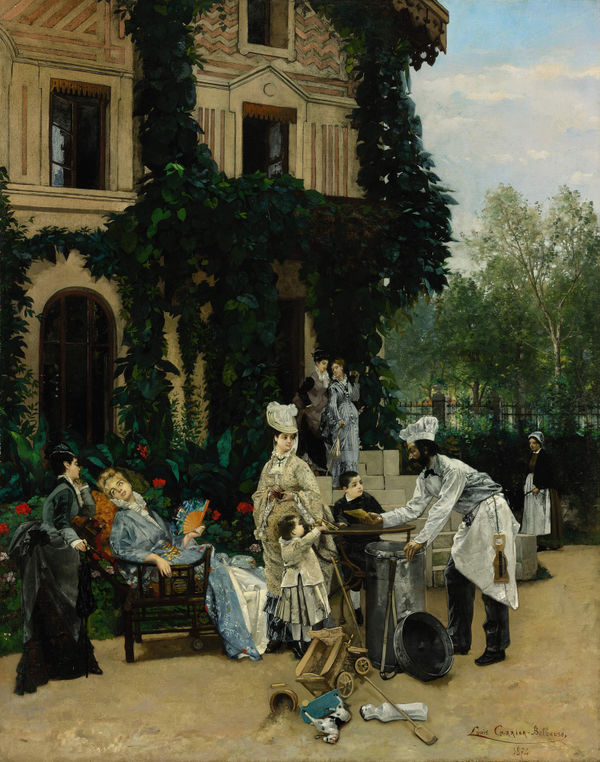Louis-Robert Carrier-Belleuse was the son of the famous sculptor and painter Albert-Ernest Carrier-Belleuse. He grew up observing his father, learning his artistic techniques, and following his instruction. He entered the Ecole des Beaux-Arts where he focused on painting. Taught by Alexandre Cabanel and Gustave Boulanger, two of the most successful painters of the time, Carrier-Belleuse mastered academic techniques and in 1870 exhibited for the first time at the Salon.
Following the Franco-Prussian war, Carrier-Belleuse, while not as radical as the Impressionists, became known for his paintings of modern life, depicting the daily life of Parisian streets. In his works, his academic education is clear but his choice of subject matter suggests the influence of his Impressionist contemporaries.
In 1889, Carrier-Belleuse received a Silver Medal at the Exposition Universelle. In addition, his contributions to France's art and culture were recognised with the Legion of Honor medal. At this time, he also began to focus increasingly on sculpture, particularly portrait busts, and he became well known as a sculptor in the Central American nations.
The final years of Carrier-Belleuse's career was devoted primarily to sculpture and large-scale faience projects. He died in June 1913, and his death was noted in the papers in London and New York as well as his native France.

